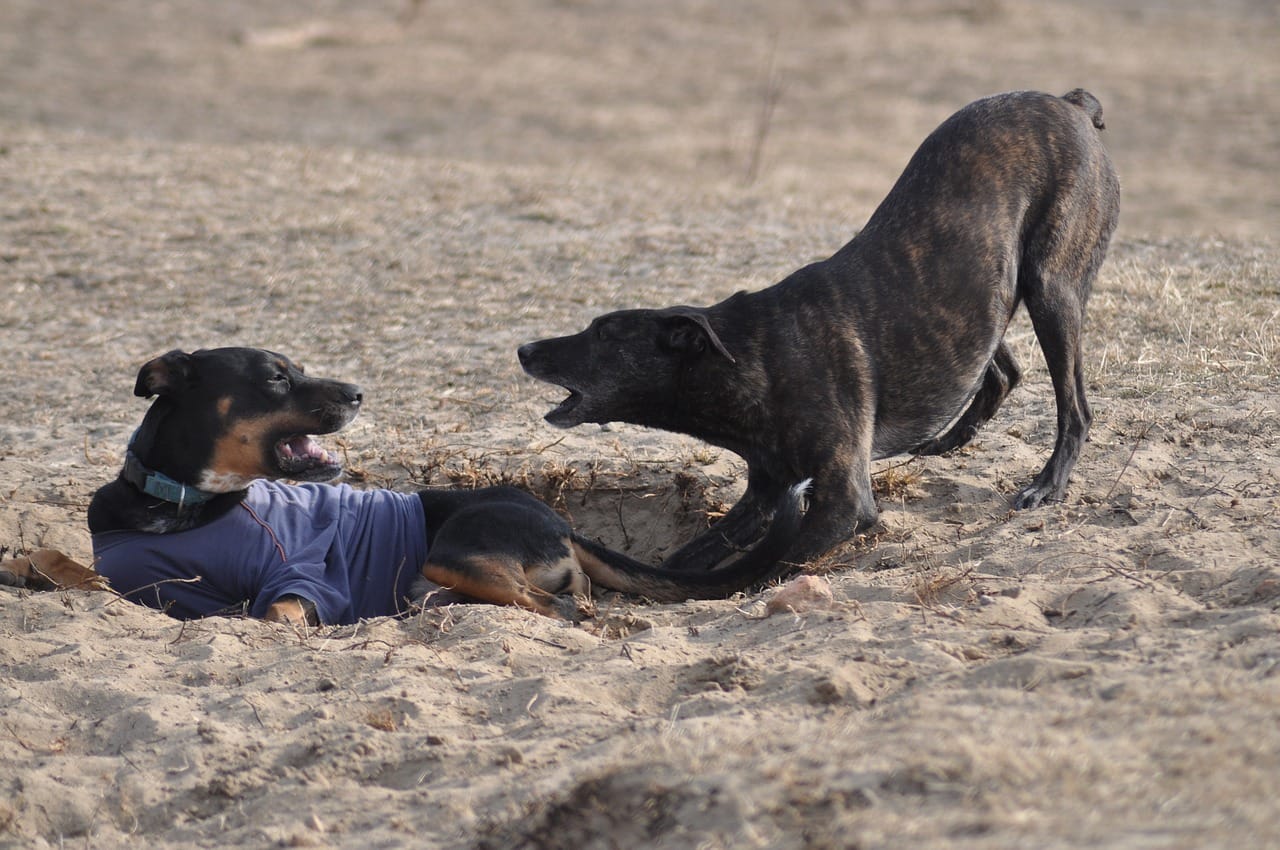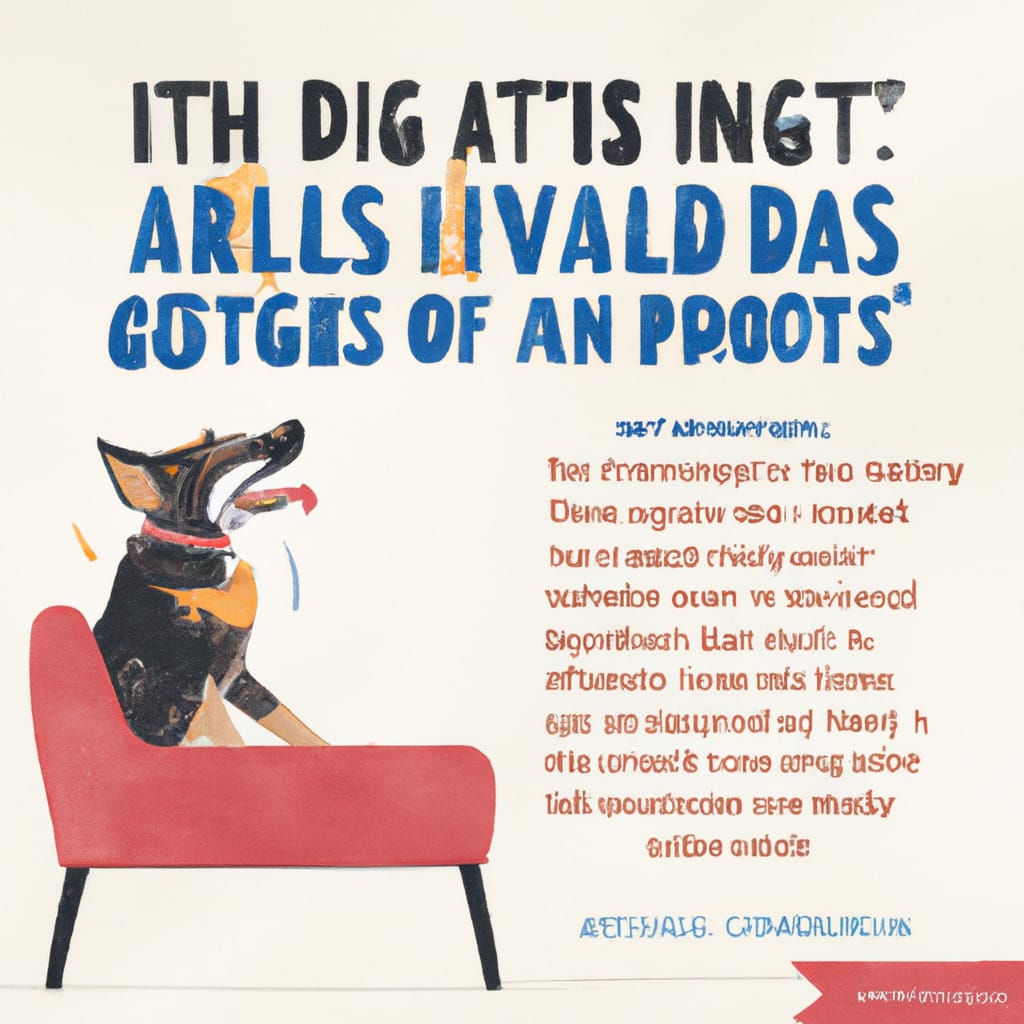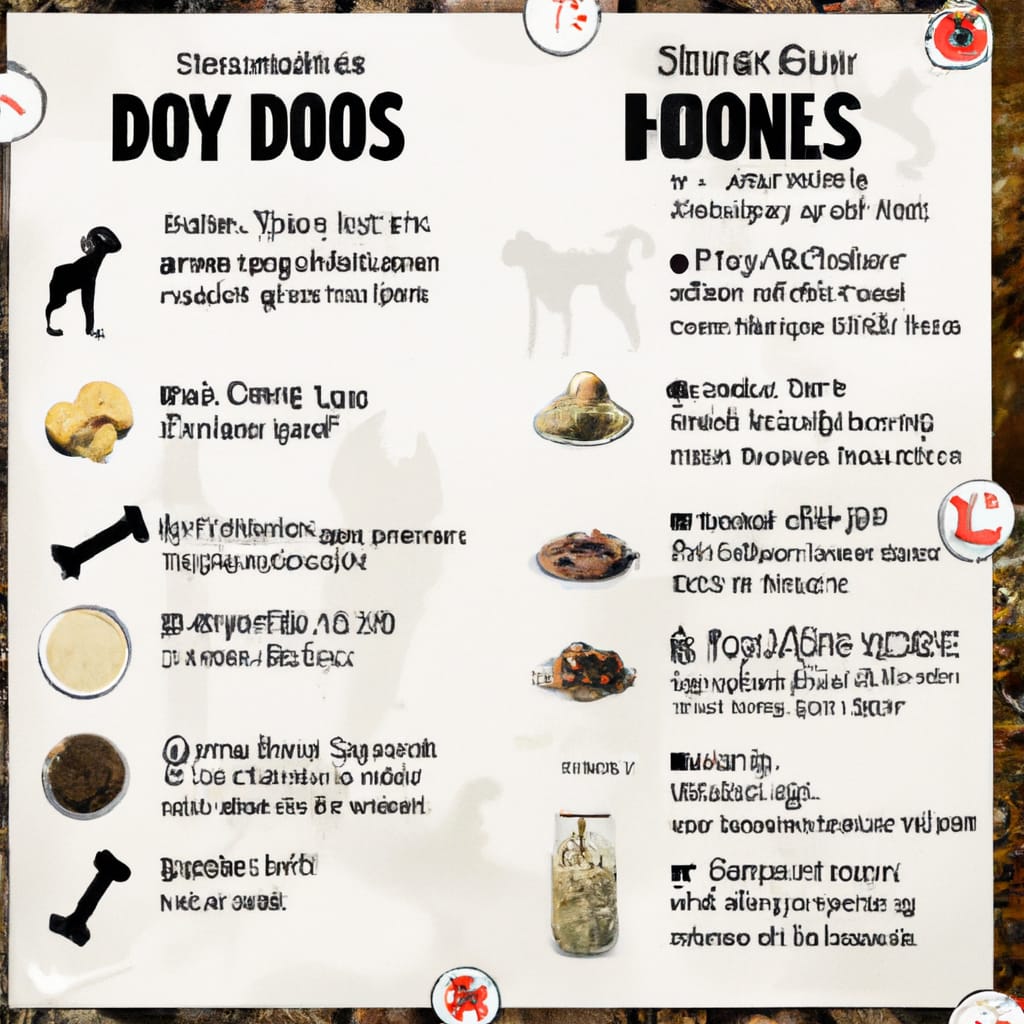The Science Of How Dogs Communicate: Body Language And Signals
Ever wondered what your dog is trying to tell you when they wag their tail or tilt their head? In this article, we explore the fascinating world of canine communication, diving into the science of how dogs communicate through their body language and signals. From tail wags to ear positions, we uncover the meaning behind these gestures and provide insights to help you better understand and communicate with your furry friend. So, get ready to decode your dog’s messages and strengthen your bond with them as we unravel the secrets of their unique communication system.
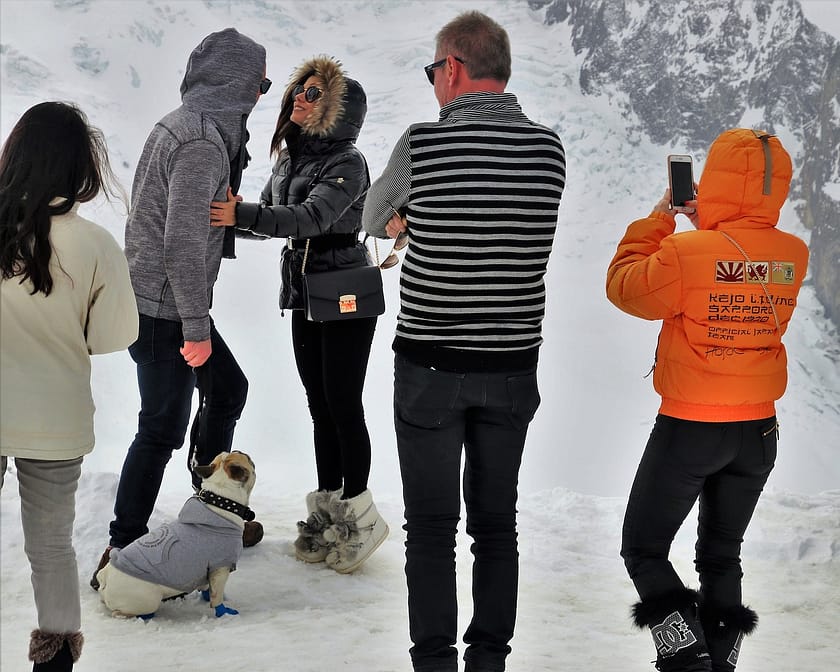
Understanding Canine Communication
Dogs are highly social animals that communicate with each other and with humans through a variety of ways. While barking and whining are commonly known forms of communication, understanding canine body language is crucial for comprehending their emotions and needs. In this article, we will explore the importance of body language, the different types of signals dogs use, and how they use body language to effectively communicate.
Importance of Body Language
Body language plays a vital role in canine communication as it allows dogs to convey their emotions, intentions, and needs. A dog’s body language consists of various signals, including tail wagging, facial expressions, eye contact, ear positions, posture, stance, body movements, vocalizations, and scent marking. By being aware of these signals and understanding their meanings, you can have a better grasp of what your furry friend is trying to tell you.
Different Types of Signals
Canine body language encompasses a wide range of signals, each serving a distinct purpose. Tail wagging is perhaps one of the most recognizable signals, but it is essential to note that different patterns of wagging convey different meanings. Additionally, facial expressions, ear positions, and body movements all have their own significance in canine communication. By observing and interpreting these signals, you can gain valuable insights into your dog’s emotional state and intentions.
How Dogs Use Body Language to Communicate
Dogs rely heavily on their body language to communicate with each other and with humans. Understanding how they utilize these signals can greatly enhance your ability to communicate effectively with your furry friend. Dogs use tail wagging to express various emotions, such as excitement, happiness, and even anxiety or aggression. By observing the context and intensity of their wagging, you can better gauge their emotional state. Similarly, facial expressions and eye contact are powerful tools in canine communication, allowing dogs to express joy, fear, submission, or aggression. By paying attention to their ears, posture, stance, and body movements, you can gain valuable insights into their intentions and emotions. Vocalizations, such as barking, growling, and whining, also play a significant role in canine communication, as they convey various emotions and needs. Lastly, scent marking is another important form of communication, as it allows dogs to leave messages for other dogs and mark their territories.
Tail Wagging and Other Tail Signals
Meaning of Different Tail Wagging Patterns
Tail wagging is a common and easily recognizable signal in canine communication. While it is often associated with happiness or friendliness, the meaning behind tail wagging is more nuanced. Different patterns and positions of tail wagging can convey a range of emotions and intentions. For example, a rapid and wide wag generally indicates excitement and happiness, while a slow and low wag may suggest caution or insecurity. A stiffly held tail, accompanied by tense body language, could signify aggression or fear. It is crucial to consider the overall context, body language, and other signals when interpreting a dog’s tail wagging.
Other Tail Signals and What They Indicate
Apart from wagging, dogs also use their tails in other ways to communicate their emotions and intentions. A tucked tail, which is pulled between the hind legs, often indicates fear, anxiety, or submission. Conversely, a raised tail, held high and stiffly, can demonstrate dominance or confidence. A slowly wagging tail may suggest indecision or uncertainty. It is essential to pay attention to the overall body language and other signals in conjunction with tail movements to accurately interpret a dog’s emotions and intentions.
Facial Expressions and Eye Contact
Importance of Facial Expressions
Facial expressions are a crucial component of canine communication. Dogs have a vast repertoire of facial expressions that allow them to convey their emotions and intentions effectively. By analyzing their facial expressions, you can better understand what your furry friend is feeling and respond accordingly. It is essential to consider the entire face, including the eyes, mouth, ears, and wrinkles, when interpreting a dog’s facial expressions.
The Meaning of Different Facial Expressions
A dog’s facial expressions can reveal a wealth of information about their emotional state. A relaxed and open mouth, soft eyes, and loose facial muscles typically indicate a calm and content dog. On the other hand, a tense mouth, narrowed eyes, or wrinkled forehead may suggest fear, anxiety, or aggression. Subtle changes in facial expressions, such as lip licking or yawning, can also convey stress or discomfort. By closely observing a dog’s facial expressions, you can gain insight into their emotional well-being and respond appropriately.
Interpreting Eye Contact
Eye contact is a powerful form of communication for dogs. While direct eye contact is often seen as confrontational or challenging in human interactions, it holds a different meaning in the canine world. Dogs use eye contact to convey various messages, including trust, submission, or dominance. Direct eye contact can be seen as a challenge or threat, while avoiding eye contact may suggest submission or respect. It is crucial to consider the overall body language, context, and individual differences when interpreting a dog’s eye contact.
Ear Positions and Their Significance
Different Ear Positions and Their Meanings
Dogs communicate through the positioning and movement of their ears, which can indicate their emotional state and intentions. Erect and forward-facing ears generally signal attentiveness and focus, while ears pulled back or flattened against the head often indicate fear, submission, or aggression. One ear forward and one ear back could suggest confusion or curiosity. By observing a dog’s ear positions, you can gain valuable insight into their emotional state and be more attuned to their needs.
How Dogs Use Ear Positions to Communicate
Dogs rely on their ear positions to communicate their emotions and intentions to other dogs and humans. When a dog raises their ears, they are often showing interest or attentiveness. Conversely, when dogs flatten or pull back their ears, they are signaling fear, submission, or aggression. By paying attention to their ear positions, you can better understand their emotional state and respond accordingly.
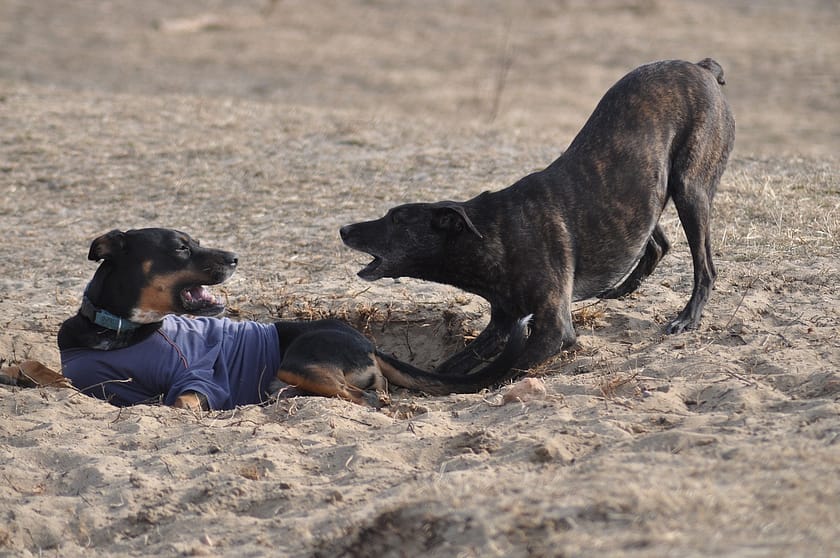
Posture, Stance, and Body Movements
The Role of Posture and Stance in Communication
Posture and stance are critical components of canine communication, allowing dogs to convey their emotions and intentions clearly. A dog’s overall body position, including the alignment of their spine, head, and tail, provides valuable insights into their emotional state. An upright and relaxed posture generally indicates confidence and assertiveness, while a crouched or lowered stance can signify fear, submission, or aggression. By observing a dog’s posture and stance, you can gauge their emotional well-being and better understand their communication.
Body Movements and Their Significance
Alongside posture and stance, dogs use various body movements to communicate their emotions and intentions. Expressive movements such as wiggling, jumping, or spinning often convey excitement and happiness. Conversely, slow and deliberate movements may denote caution or uncertainty. Sudden jerky movements, accompanied by tense body language, can indicate fear or aggression. By paying attention to a dog’s body movements, you can gain insight into their emotional state and respond appropriately.
Interpreting Different Body Positions and Movements
Different body positions and movements can convey a range of messages in canine communication. A relaxed and loose body typically indicates a calm and content dog, while a tense and rigid body is often associated with fear or aggression. A dog leaning forward might be showing interest or assertiveness, while leaning backward may indicate fear or submission. Sideways body postures can suggest curiosity or uncertainty. By analyzing these body positions and movements in conjunction with other signals, you can better comprehend a dog’s emotions and intentions.
Vocalizations and Their Meanings
Understanding Different Vocalizations
Vocalizations are another crucial aspect of canine communication. Dogs use different vocalizations, including barking, growling, and whining, to express their emotions, needs, and intentions. Barking is a versatile vocalization that can convey excitement, alertness, fear, or even aggression. Growling is often associated with warning or aggression, while whining typically signifies discomfort, anxiety, or a desire for attention. By understanding the meaning behind these vocalizations, you can better respond to your dog’s emotional state and cater to their needs.
How Dogs Use Vocalizations to Communicate Their Emotions or Needs
Dogs use vocalizations as a means to communicate their emotions or needs to other dogs and humans. Barking can be an expression of joy, playfulness, or a warning signal. Growling is often used to establish boundaries or show aggression, while whining can indicate anxiety, discomfort, or the need for attention. By paying attention to the context, intensity, and accompanying body language, you can better interpret your dog’s vocalizations and respond accordingly.

Using Scent Marking as Communication
Why Dogs Use Scent Marking
Scent marking is an integral part of canine communication, allowing dogs to leave messages for other dogs and mark their territories. By urinating or depositing other scent cues, dogs communicate essential information, such as their presence, hierarchy, reproductive status, and emotions. Scent marking serves as a powerful tool for dogs to establish social bonds, communicate boundaries, and convey their intentions.
Different Types of Scent Markings and Their Purposes
Dogs use various types of scent markings to communicate different messages. Urine marking, for instance, can convey information about a dog’s gender, reproductive status, and social rank within their pack. Anal gland secretions and paw pad scent glands also play a role in scent marking. By analyzing and interpreting these scent cues, dogs can gather critical information about each other and establish social hierarchies.
Understanding Social Hierarchies and Dominance
The Importance of Hierarchy in Canine Communication
Dogs are inherently social animals that thrive in structured social hierarchies. Canine communication heavily relies on the establishment of dominance and submission within their pack or social group. Understanding the dynamics of social hierarchies is crucial for comprehending dog communication and interactions. By recognizing the role of hierarchy, you can better navigate your dog’s social interactions and foster a balanced and harmonious relationship.
Dominance Signals and Their Role in Interactions
Dominance signals are an essential aspect of canine communication, allowing dogs to assert their social position and establish boundaries. These signals can include body postures, facial expressions, vocalizations, and even physical contact. By understanding the subtle cues and nuances of dominance signals, you can better understand your dog’s behavior and respond appropriately during social interactions.
Misconceptions about Dominance in Dog Communication
Misconceptions about dominance in dog communication have led to misunderstandings and often ineffective training methods. It is essential to recognize that dominance in the canine world is not solely about aggression or “being the alpha.” Instead, it is a complex social dynamic based on respect, trust, and clear communication. By dispelling these misconceptions and gaining a deeper understanding of dominance, you can establish a healthier and more secure relationship with your dog.

Calming Signals and Their Functions
What Are Calming Signals
Calming signals are a set of subtle behaviors that dogs use to navigate social situations and diffuse tension. These signals are a way for dogs to communicate their trust, intentions, and desire to avoid conflict. By employing calming signals, dogs aim to maintain harmony and prevent potential aggression or confrontations. Recognizing and responding appropriately to these signals can greatly enhance communication and promote positive interactions with your dog.
How Dogs Use Calming Signals to Diffuse Tension or Communicate Trust
Dogs use calming signals as a form of non-confrontational communication to navigate social situations and defuse potential conflicts. These signals can include lip licking, yawning, turning away, avoiding eye contact, or approaching in a curved manner. By employing these signals, dogs convey their trust, intentions, and desire to establish a peaceful interaction. By understanding and respecting these calming signals, you can create a safe and comfortable environment for your dog and encourage open communication.
Misinterpretations and Common Mistakes
Common Misinterpretations of Dog Body Language
Misinterpreting dog body language can lead to misunderstandings and miscommunication in our interactions with them. It is crucial to recognize common misinterpretations, such as assuming that a wagging tail always means a dog is friendly or that a growling dog is purely aggressive. By educating ourselves and learning to accurately read and interpret their body language, we can better understand our dogs’ emotions and respond appropriately.
Avoiding Common Mistakes in Understanding Dog Communication
To avoid common mistakes in understanding dog communication, it is necessary to educate ourselves and observe their body language holistically. We must consider the context, accompanying signals, and individual differences when interpreting their behaviors. Additionally, seeking guidance from professionals, such as veterinarians or certified trainers, can greatly contribute to our understanding of canine communication. By continuously learning and refining our knowledge, we can establish stronger bonds and more effective communication with our furry friends.
In conclusion, understanding canine communication is essential for any dog owner or enthusiast. By paying attention to their body language, including tail wagging, facial expressions, eye contact, ear positions, posture, body movements, vocalizations, and scent marking, we can gain valuable insights into their emotions, needs, and intentions. Equipped with this understanding, we can foster stronger connections, improve our training methods, and create a harmonious and fulfilling relationship with our beloved canine companions.



